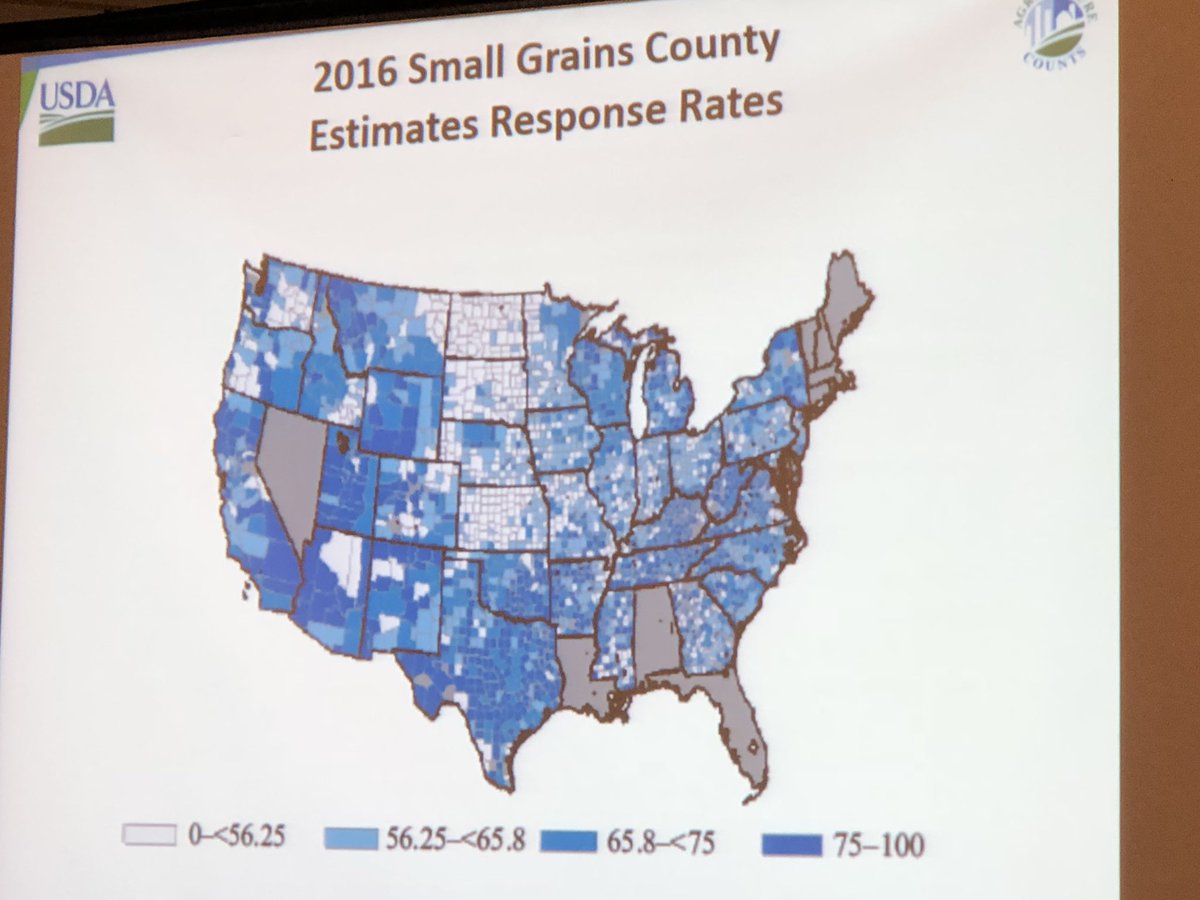#JSM2018 Next up Hubert Hamer from NASS talking about NASS Small Area Estimation 

#JSM2018 Hamer NASS has Agriculture Loss Coverage County Option program. Payments triggered based on county crop revenue falling below program guarantee. NASS surveys used to make this decision, along with other data
#JSM2018 Hamer Program paid out $3.7 billion on 2016. Small changes can affect payments
#JSM2018 Hamer Acreage data collected in March and June, September and December collection for Small grains and row crops. Quick turnaround for estimates
#JSM2018 Hamer Response rates highly variable across the country. Need minimum sample sizes in each county in order to publish estimates 

#JSM2018 Hamer 80% of US production in wheat in counties that can publish. 90% of corn production at county level is published
#JSM2018 Hamer Challenges: Reponse/disclosure limits available data to publish. Weather, too
#JSM2018 Hamer Use adaptive design approach to data collection and target resources
#JSM2018 Publish estimates for large swath of corn belt in US 

#JSM2018 Hamer Building Bayesian models for county estimates, need to benchmark to other existing data
#JSM2018 Hamer Get significantly more data from model-based estimates than direct estimates
#JSM2018 Hamer will continue to build models based on historical data, set publication standards based on model, used model-based estimates for all crops in 2019
#JSM2018 Hamer NASS is moving forward in geo-referencing list frame and integrating survey data with other sources
• • •
Missing some Tweet in this thread? You can try to
force a refresh











